Take a leaf out of the Italians’ book and learn to grow and cook with Romano beans, a broad, flat bean in the same family as garden variety string beans. Romano beans are juicy, with a sweet flavor and a great crunch, and they come in a wonderful range of colors.
Italian flat beans taste fantastic raw, sautéed, or in traditional dishes like minestrone. Fresh Romano beans can be difficult to find, making them a prime seed choice for the home gardener!
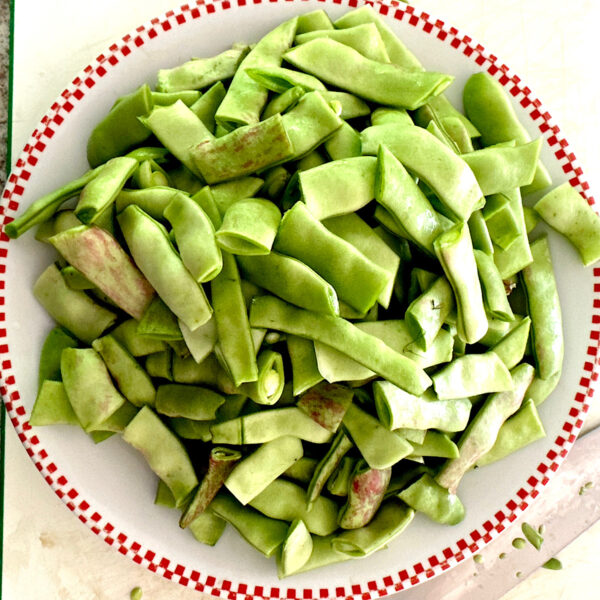
Jump to: Italian Flat Bean Varieties | How to Grow Italian Flat Beans | Cooking With Flat Beans
This post may contain affiliate links. As an Amazon Associate, I also earn from qualifying purchases. You can read our disclosure information here–
The Importance of Flat Beans to an Italian Kitchen Garden
If I asked you what vegetables you’d plant in an Italian vegetable garden, you’d probably mention things like tomatoes and eggplant. Beans may not be the first thing you think of, but if you really want to channel your inner Italian grandparent, you shouldn’t leave them out.
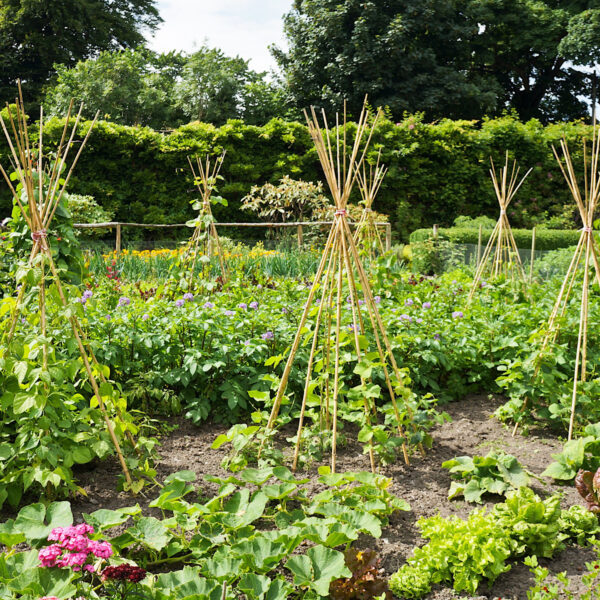
Italian flat beans have a long history in their home country of Italy. Common string beans, which they descend from, were first brought to Europe from Central America around the 16th century.
Although beans were already domesticated when they reached Europe, the Italians quickly jumped on the bean bandwagon and began producing a range of different varieties.
These include today’s subject, the flat bean, which is now a classic side dish and an ingredient in traditional dishes like minestrone.
Aside from the fact that they’re a staple in Italian cooking, flat beans also make a great choice for your Italian vegetable garden because they’re so easy to grow and hard to find fresh.
Italian flat beans are also hardy and disease resistant, with a long growing season and high yield.
Did you know? Flat beans are also very popular in Indian cooking.
Different Varieties of Italian Flat Beans
Italian flat beans are a selectively bred variety of the common string bean, Phaseolus vulgaris. They’re a type of snap bean or green bean, which aren’t harvested for their seeds. Instead, you eat the entire pod!
In Italy, these beans are called fagiolini piattoni. This means “saucer beans”, a reference to their flat shape. Here in the USA, they may be sold as Romano beans, Italian flat beans, or Italian snap beans.
Popular varieties of Italian flat beans include:
- Romano: the original pole bean
- Roma II Bush: bush rather than pole type
- Smeraldo Pole: stringless pole type
- Super Marconi: typical romano bean
- Bobis A Grano Nero: named for its black seeds
- Meraviglia di Venezia: yellow bean pods
- Helda: no strings, great flavor
- Dragon’s Tongue: an heirloom flat bean
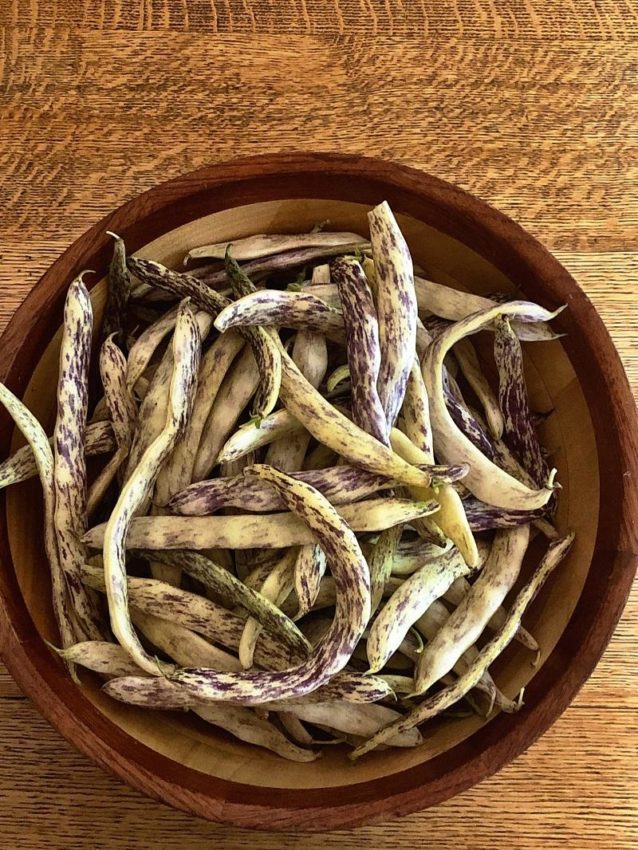
Where to buy Italian flat bean seeds
Because we don’t tend to associate them with Italian cooking like we do something like tomatoes, Italian flat beans can be a little more difficult to find.
I’ve searched in my favorite seed catalogs and I’ve found them consistently available in two places:
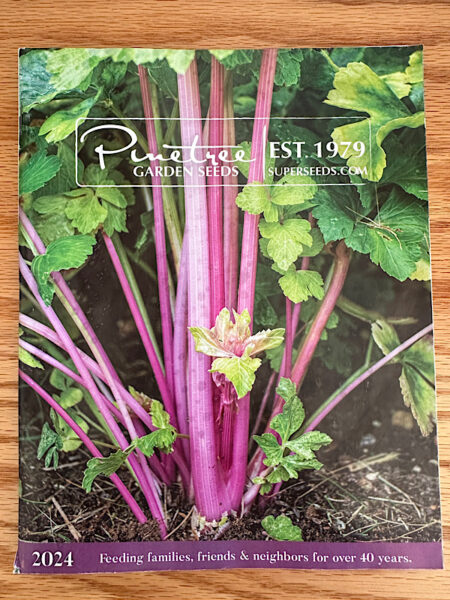
If you don’t want to grow your own Romano beans but would just like to cook with them, you may be able to find them at your local farmer’s market during the summer bean harvesting season, but they are not always a common occurrence.
If you can’t find them or grow them, you could try these canned Romano beans from Amazon, but I have not tested them, so buyer beware.
How To Grow Italian Flat Beans
Italian flat beans are quite sturdy and highly productive.
Although they thrive best in Mediterranean climates, you can cultivate them pretty much anywhere as long as you keep the following tips in mind.
Sowing Seeds (Outdoors)
I don’t recommend starting beans indoors. The roots are easily damaged when you transplant to the garden, and beans grow so quickly they don’t need to be started early.
Here are some tips for how to sow beans in the outdoor garden:
- Sow in the garden after the soil has warmed up, preferable to 60 °F. Seeds may rot in cooler soils
- Sow approximately 3 inches apart and cover with 2 inches of fine soil. Press the soil down lightly and water gently right after sowing
- Seedlings come up about 10-14 days after sowing
- For a constant supply of beans, keep sowing every 2 weeks (aka succession planting)
- When seedlings are 1-2 inches high, thin them to around 12 inches apart
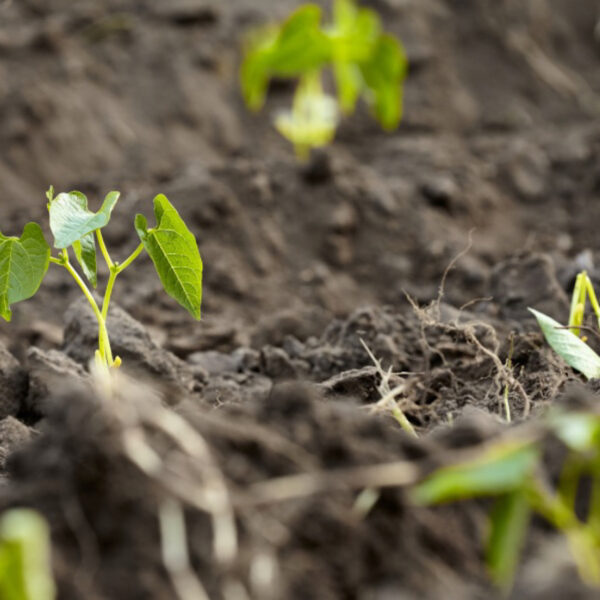
Support System for Beans
Remember that the pole bean varieties are vining plants and can grow quite tall so be sure to have bean trellises ready to go. If the weather is nice, your plants will grow very quickly and soon need vertical support to keep them from sprawling on the ground!
In ideal conditions, Romano pole beans can reach up to 10ft in height.
Flat beans also come as bush bean varieties (Roma II is a good one), and these will not need a tall trellis, but they will still benefit from some support. Sometimes just growing bush beans closer together is enough support.
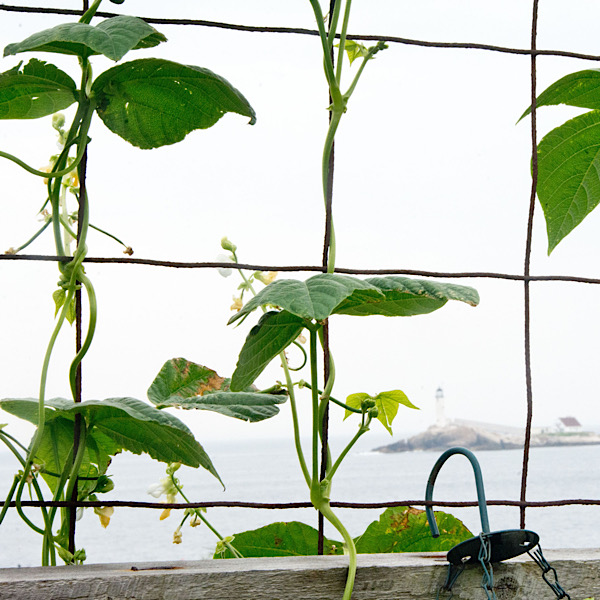
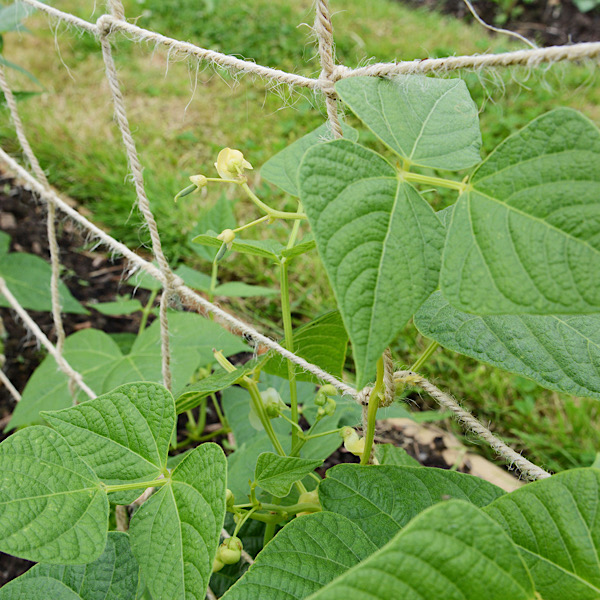
Harvest
Depending on the variety (the specifics should be on the seed pack you’ve purchased), Italian flat beans can mature in as little as 65 days.
There’s usually no need for extra fertilizer during this time, as you already provided some while planting. The beans can use their nitrogen-fixing abilities to provide the rest themselves.
You can harvest Italian flat bean pods once they reach about 6″ in length—or leave them to mature fully if you want to dry the beans instead of eating the pods.
If you are not saving the seeds, harvest flat beans when the pods have undeveloped or small seeds. Harvest regularly and often to avoid tough, stringy pods and to encourage your bean plant to produce more pods.
Troubleshooting
In terms of pests and diseases, flat beans are considered fairly problem-free. They’re relatively resistant to most common bean diseases, especially if you provide enough space (to allow air circulation) and well-draining soil (to prevent rot and fungus).
Do keep an eye out for pests like bean beetles. They can damage your bean plant and its crop.
Tip: You can grow Italian flat beans in a container, especially the bush varieties. Pole cultivars could work too, but you’d need a sturdy trellis. Fabric grow bags could be a good choice.
Remember that container-grown veg may need more fertilizer and regular watering.
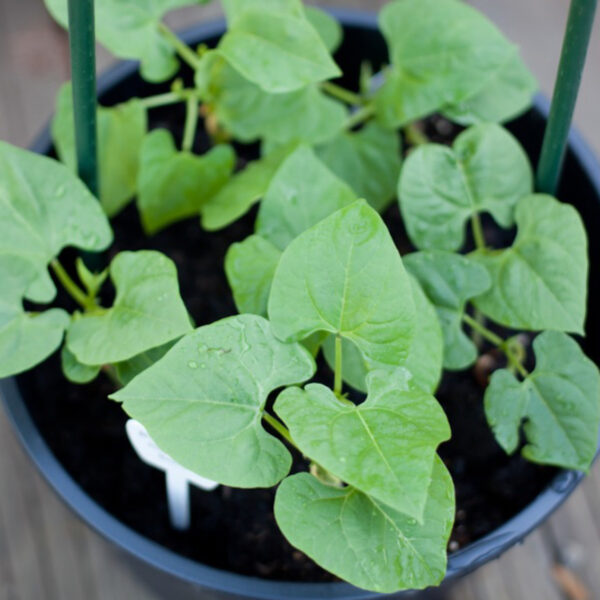
Beans as Companion Plants in the Italian Kitchen Garden
Bush flat beans can be a beneficial companion plant to like-sized Italian vegetables such as peppers, tomatoes and eggplants.
Pole bean plants can help protect and shade cool season vegetables such as spinach and lettuce.
Tip: The nitrogen-fixing aspect of beans is great for the soil, and will benefit next year’s crop of veggies.
Cooking with Flat Beans
If I had to choose between regular string beans and Italian flat beans, I’d go for the flat type every time. They’re meatier, they’re crunchy, and many varieties lack the annoying string. Additionally, they just taste more like beans, with a very rich and pronounced flavor.
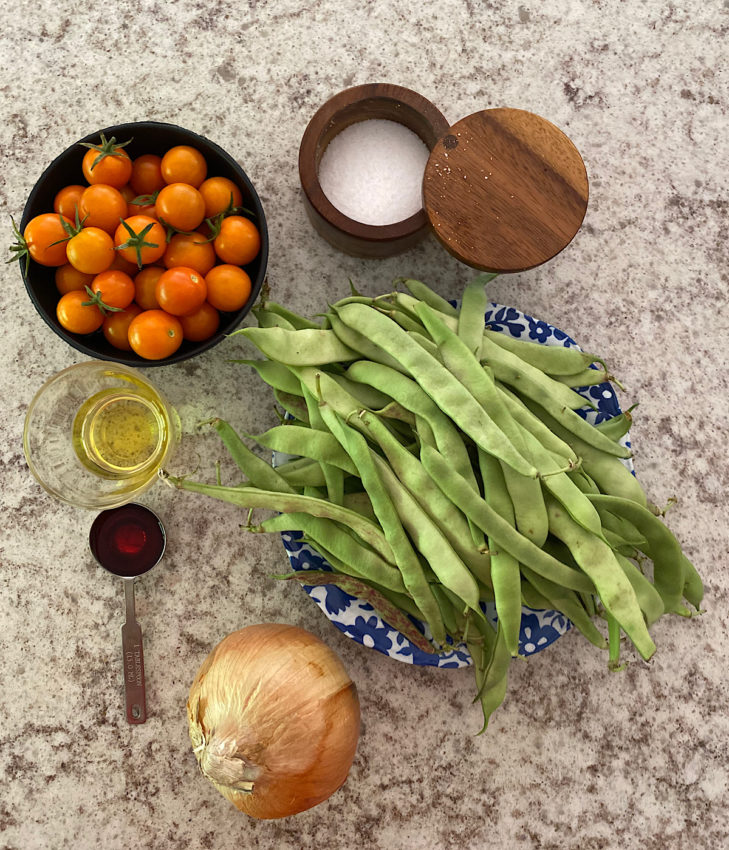
In terms of nutrient content, these beans couldn’t be better. For starters, they’re low in calories but bursting with fiber. They also contain a range of essential vitamins (notably, vitamin C), as well as important minerals. And for the vegetarians among us: they’re high in protein, too!
If harvested at their peak, Romano beans make a great snack eaten raw, as they are extremely sweet and crunchy.
Here are some of my favorite Italian recipes that highlight Italian beans:
- Fresh Romano Beans: Italian Flat Beans With Smashed Cherry Tomatoes
- Winter (dried beans): Italian Sausage and Bean Stew
- Traditional (dried beans): Fagioli al Fiasco
- Using Canned Beans: Tuscan Bean, Cabbage & Sausage Stew
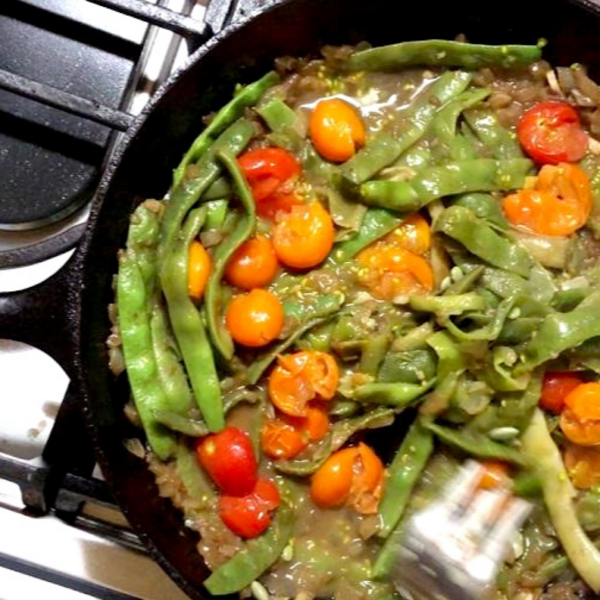
Storing & Freezing Flat Beans
Can’t use your Italian flat beans right away? Non c’è problema! Properly bagged, they last for at least a week in the refrigerator. Just don’t wash them now; do so before cooking instead.
Freezing is a popular method for preserving Italian flat beans as it helps retain their flavor, texture, and nutritional value.
Here’s how to freeze Italian flat beans:
- Wash thoroughly
- Trim the ends and cut them into the length you prefer
- Blanch the beans by boiling in water for 2-3 minutes, and then transferring them to an ice bath to stop the cooking process
- Drain the beans and pat them dry
- Place in airtight freezer bags and label with the date before placing in freezer
- Once frozen bag them up in meal-sized bags so you only thaw what you need.
If you like my articles about cooking and gardening, subscribe to my weekly newsletter, where I share free recipes and gardening tutorials.

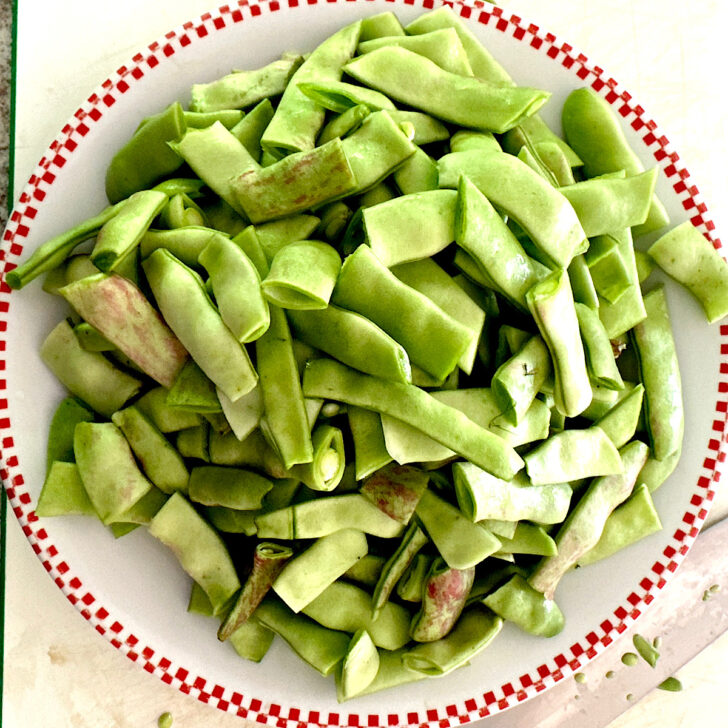
Leave a comment